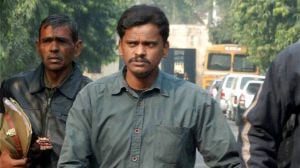The Size of Dreams
...

|
If the road to hell is paved with good intentions, then at least good deeds can lead to a fragile kind of happiness. At eighty-three, after watching the dreams of the world come and go, surely Doris Lessing is old enough to know.
Lessing’s new novel, The Sweetest Dream — written as a work of fiction instead of the third volume of her autobiography — is about the Dream that soured, and the many dreams that struggled on and survived.
Comrade Johnny, hero of the Great Dream, has left his wife Frances for a newer Comrade. Frances, with her two sons Andrew and Colin, lives on in her mother-in-law Julia’s large Hampstead house. When our story opens in the Sixties, Johnny is busy saving the world, while not caring for those who live in it. Frances, meanwhile, busies herself with more mundane things like providing for not only her sons but also the assorted bunch of waifs who land up camping in her house.
If the Communist Johnny, who spends his life flying from conference to celebration, is unable to share anything with anyone, then at least Julia, and Frances, and Sylvia, readily share whatever they have. After all, the world has pulled on not so much because of those who live for the sake of their ideology, but because of those who pull on, and help others to pull on, regardless of the ideologies.
Swiftly, taking us along the years, Lessing moves from the generous, vast London house to the poor Mission in the African bush in Zimlia — a thinly-disguised Zimbabwe — where Sylvia struggles to set up a hospital of sorts. Lessing cares passionately about the fate of the country where she was born and grew up — and her passion blazes through as she tells us of Sylvia’s struggle to save lives in the face of odds that are daily mounting, corruption in the land, and the new threat of AIDS.
All is not lost, however. It is tragic, but there is hope in this land where the people hunger for books as much as they do for food. At the end of the story, we see a washed-out Johnny, and his successor Andrew, who has given in to the new system of expensive international aid for poor countries, designed to make them poorer. But we also see Frances, who has finally, after years of denying herself, found the love she has been looking for all her life; Sylvia, who has found a cause worth living and, ultimately, dying for; and Colin, who lives to tell the tale. We also see the two bright little Zimlian boys, Clever and Zebedee, who are studying to become doctors: they may or may not go back to their country, we know, but for the present they are here, their hunger for learning is being quenched, and they hold out hope for the years to come.
From beginning as a Hampstead novel to ending as the saga of an entire era, The Sweetest Dream gives us all this, and much more. Some critics have been annoyed by the sheer sprawl, the relentless accumulation of detail in the book — from the seating arrangements around the generous kitchen table, to who will sleep where, to how the financial needs of the young people, for education and food and clothes, will be paid for. These are the very details that the grand ideologies are so disdainful of, in their folly. For these are the practical details, of space and support, that need to be taken care of whenever a generation is to be pulled through difficult times. And, as we know so well today, they are all difficult times. A thoughtful book from a writer who has thought long and hard.



- 01
- 02
- 03
- 04
- 05




























